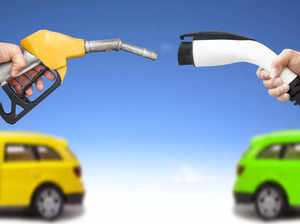
Believe it or not: Even in Saudi Arabia, renewable power is cheaper than fossil fuels
Saudi Arabia has signed deals to purchase electricity from two large-scale wind farms at record-low prices, cheaper than natural gas plants. The kingdom aims to shift rapidly to a larger share of renewables in the power grid, with the goal of generating half of its power from clean sources by 2030. The projects, developed by Japan's Marubeni Corp, benefit from state backing and favorable wind conditions in the country, making them more cost-effective than fossil fuel alternatives. The country's move towards renewable energy is part of Crown Prince Mohammed Bin Salman's efforts to diversify the economy away from oil dependence.
Saudi Arabia signed deals to buy electricity from two large-scale wind farms that are cheaper than natural gas plants, as it aims to rapidly transition to a bigger share of renewables in the power grid.
The state-run Saudi Power Procurement Co. this week said it had agreed to purchase power at record-low prices from the wind projects to be developed in the kingdom by Japan’s Marubeni Corp.
A combination of state backing and strong wind conditions in the country will help make the green power plants cheaper than fossil fuel alternatives, the head of the Saudi company said.
“What’s unique about these projects is they’ve achieved extremely low cost of electricity that is considered the lowest we’ve seen globally,” Mazin Albahkali, chief executive officer of SPPC , said in an interview.
“Achieving extremely low tariffs on renewables is definitely helping reduce the cost of power generation in Saudi Arabia.
” Saudi Arabia, the world’s biggest oil exporter , has been a laggard in renewable power generation and gets the vast majority of its electricity from plants that burn oil and gas. But that’s starting to change as Crown Prince Mohammed Bin Salman looks to increasingly pivot the economy away from its dependence on oil. The country has a goal to generate half of its power from clean sources by the end of this decade, up from less than 1% in 2022, according to data from BloombergNEF . While it’s not clear if Riyadh will reach that goal, the country is rapidly growing its fleet of solar farms and wind parks.
By 2030, over 45 gigawatts of solar and wind capacity are likely to be installed, more than 13 times the level at the end of last year, according to BNEF data.
That would also free up more of its vast oil output for exports.
Bloomberg The appeal of renewables is at least partly the cost.
SPPC said that the deal with Marubeni, which is developing the wind farms with a local partner, will ensure a levelized cost of energy of as little as 1.57 cents per kilowatt-hour from the 600-megawatt AlGhat project.
The plant is set to be the country’s biggest when completed in 2026.
Marubeni is also building the 500-megawatt Wa’ad Alshamal project, which will produce wind power at a cost of 1.70 cents a kilowatt-hour.
While it’s not possible to exactly compare variable renewable generation to gas plants on the grid, the cost is cheaper than the fossil fuels , Albahkali said.
Those low prices are helped by favorable conditions provided by the Saudi state.
“We provide the land, we provide wind speed data, we provide the permits and support them with further permits and we guarantee the power offtake,” Albahkali said.
“A lot of risks built into projects are removed here.
” SPPC also has a strong credit rating, making it a strong counter party that helps project developers get cheaper financing, he said.
In addition, the wind farm project developers plan to use Chinese wind turbines, which are much cheaper than ones made in the US or Europe.
